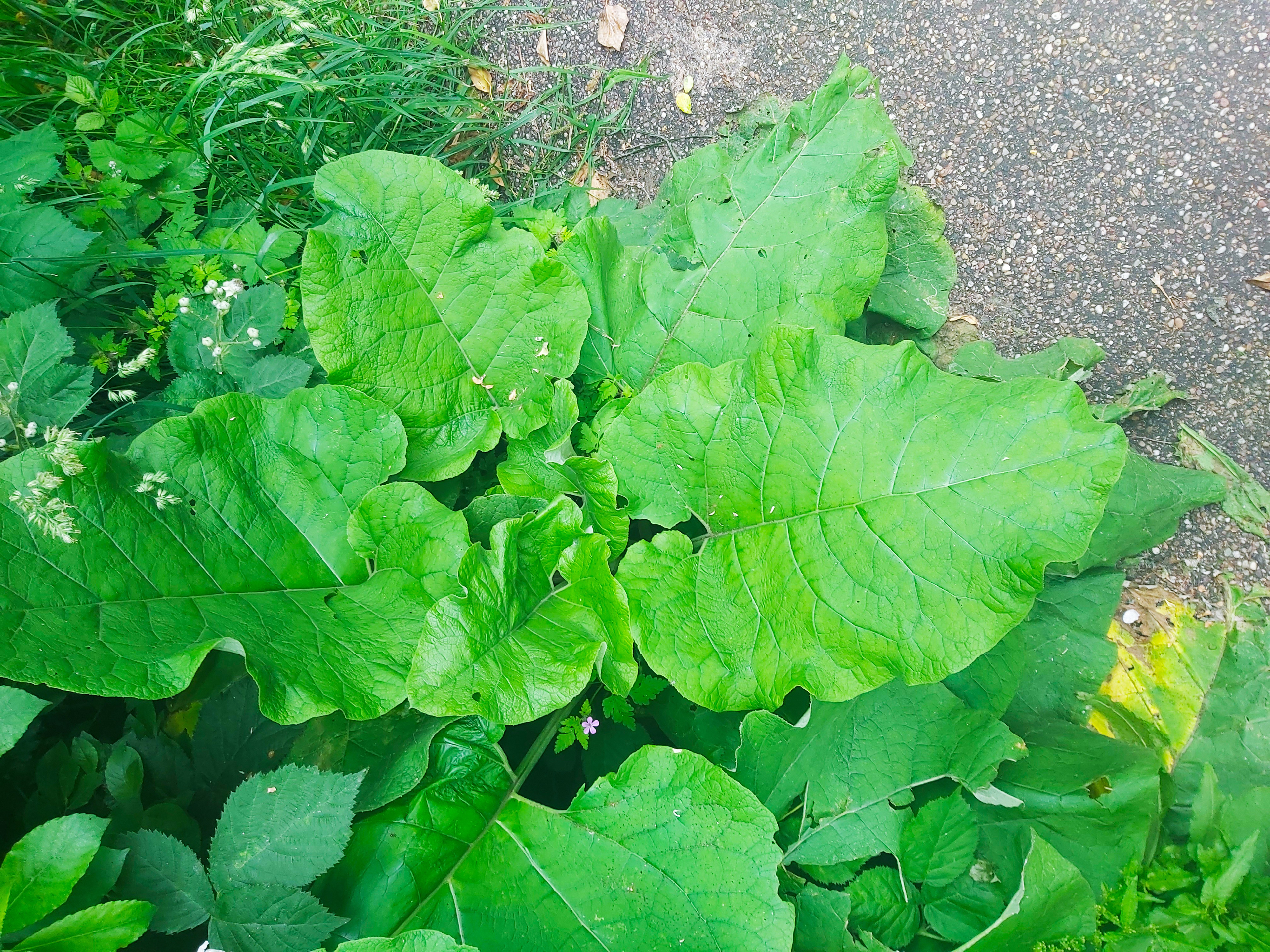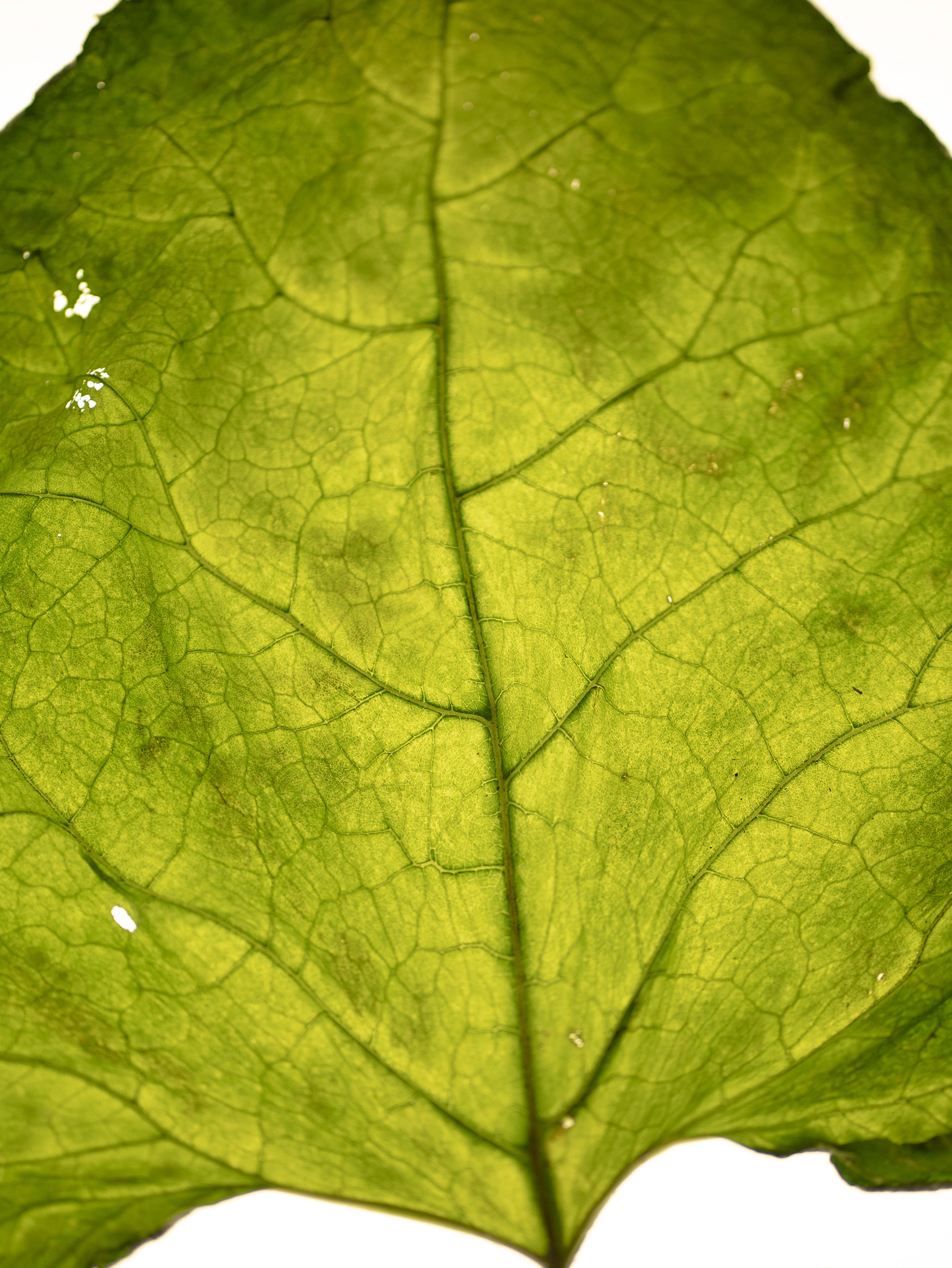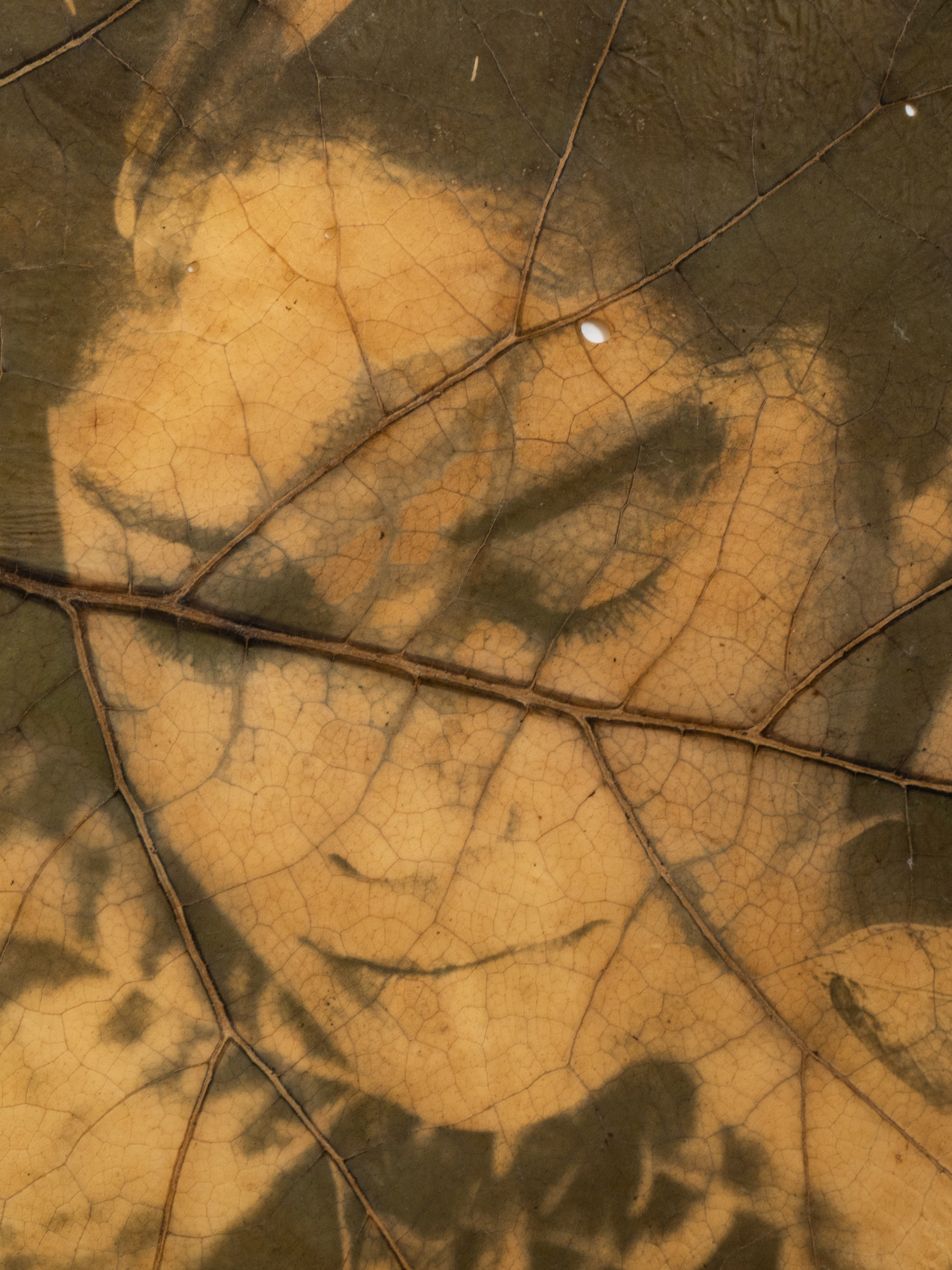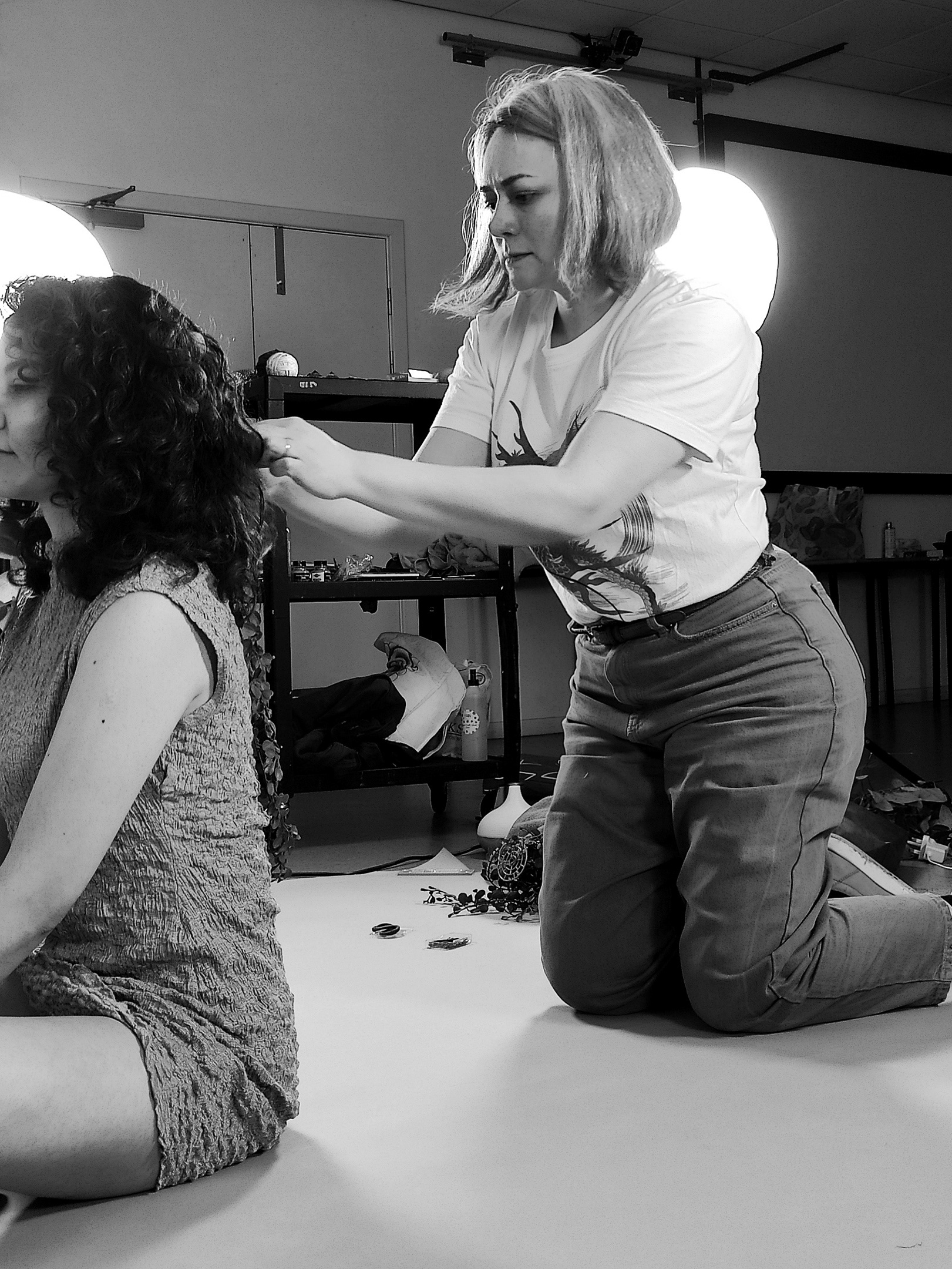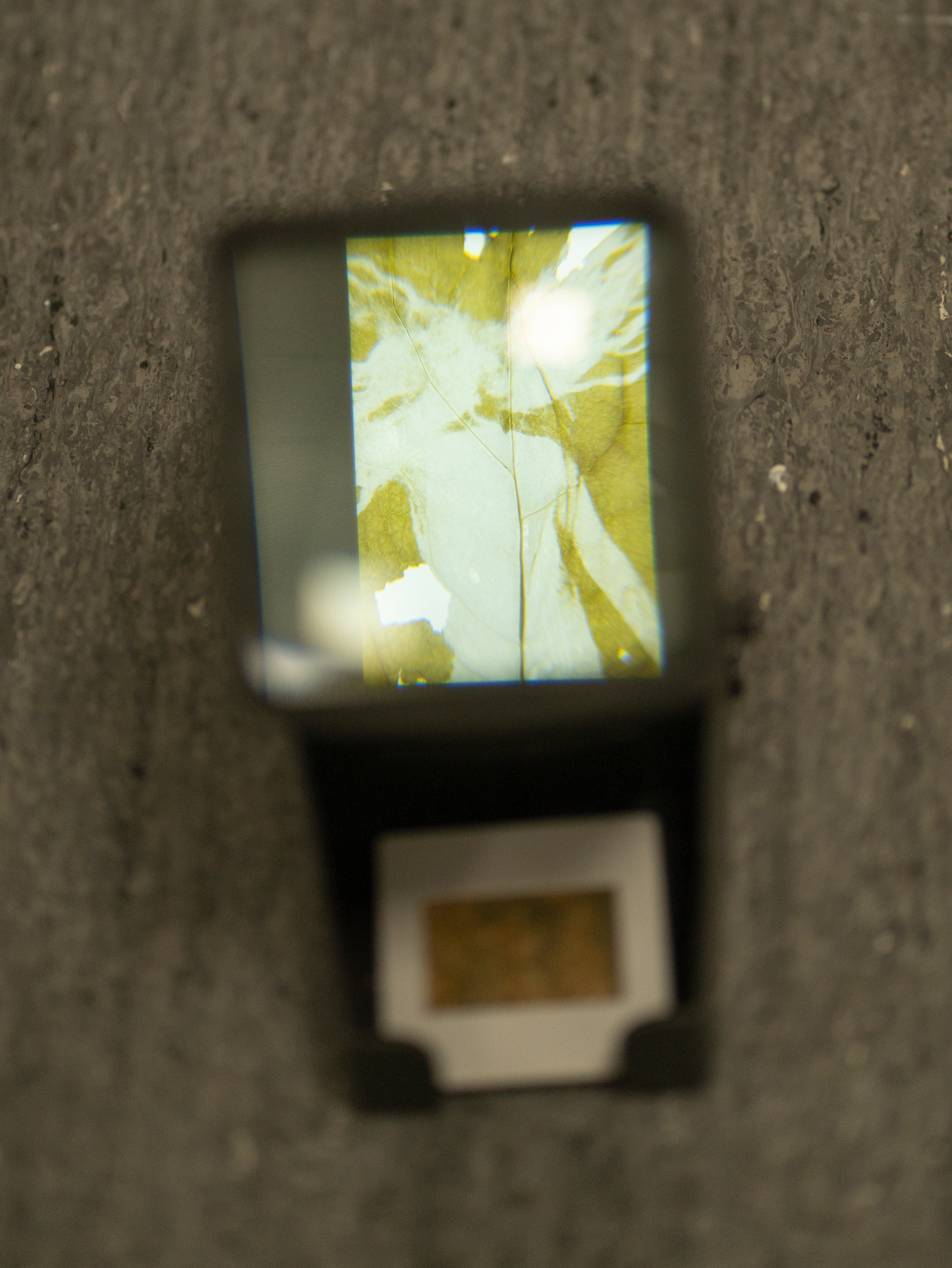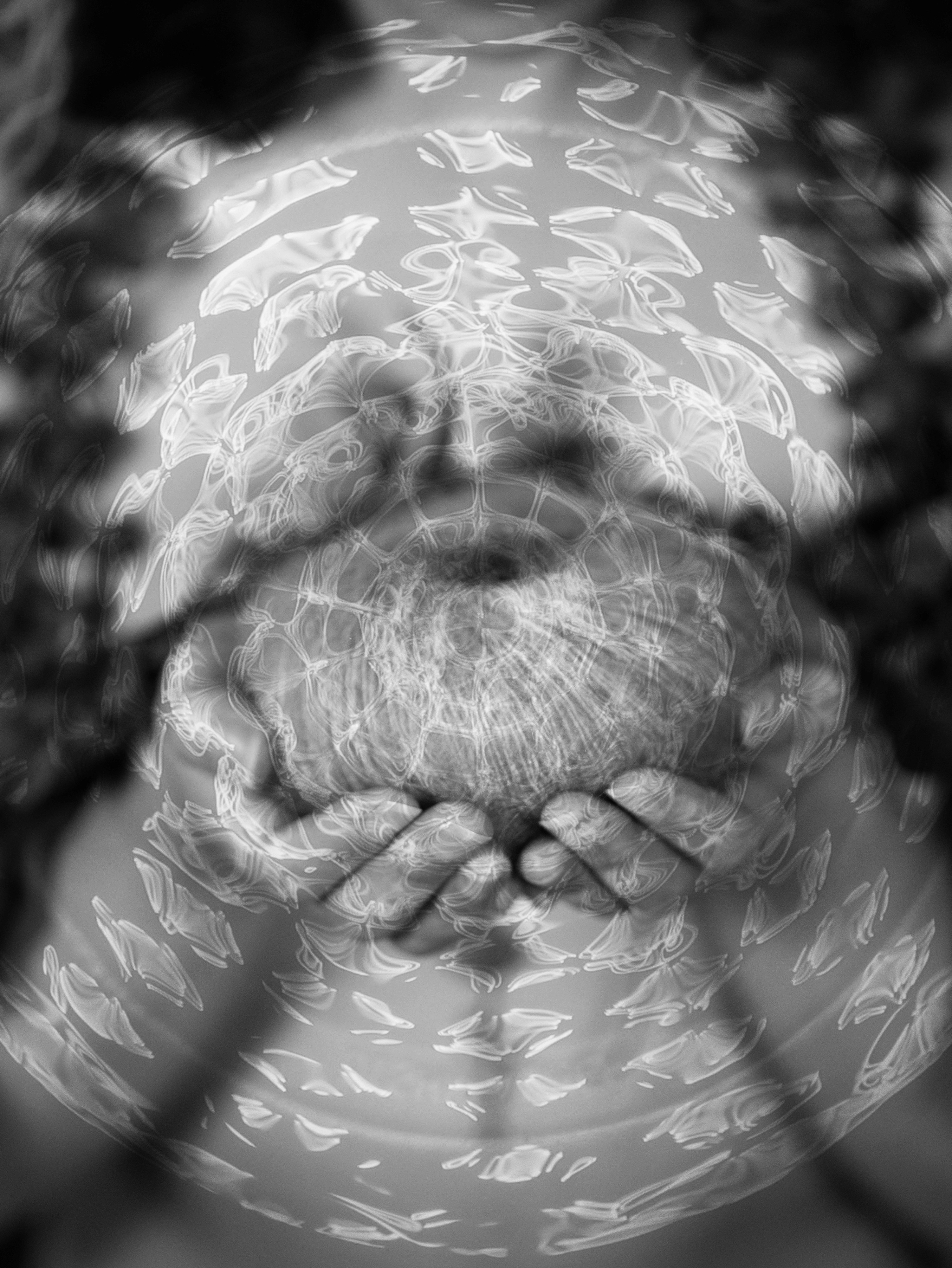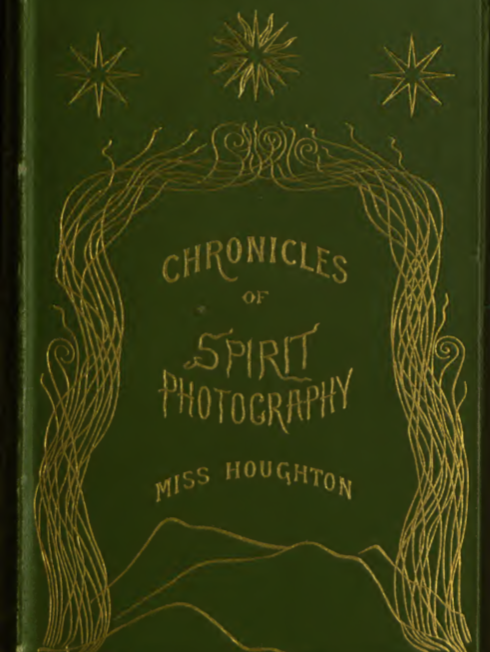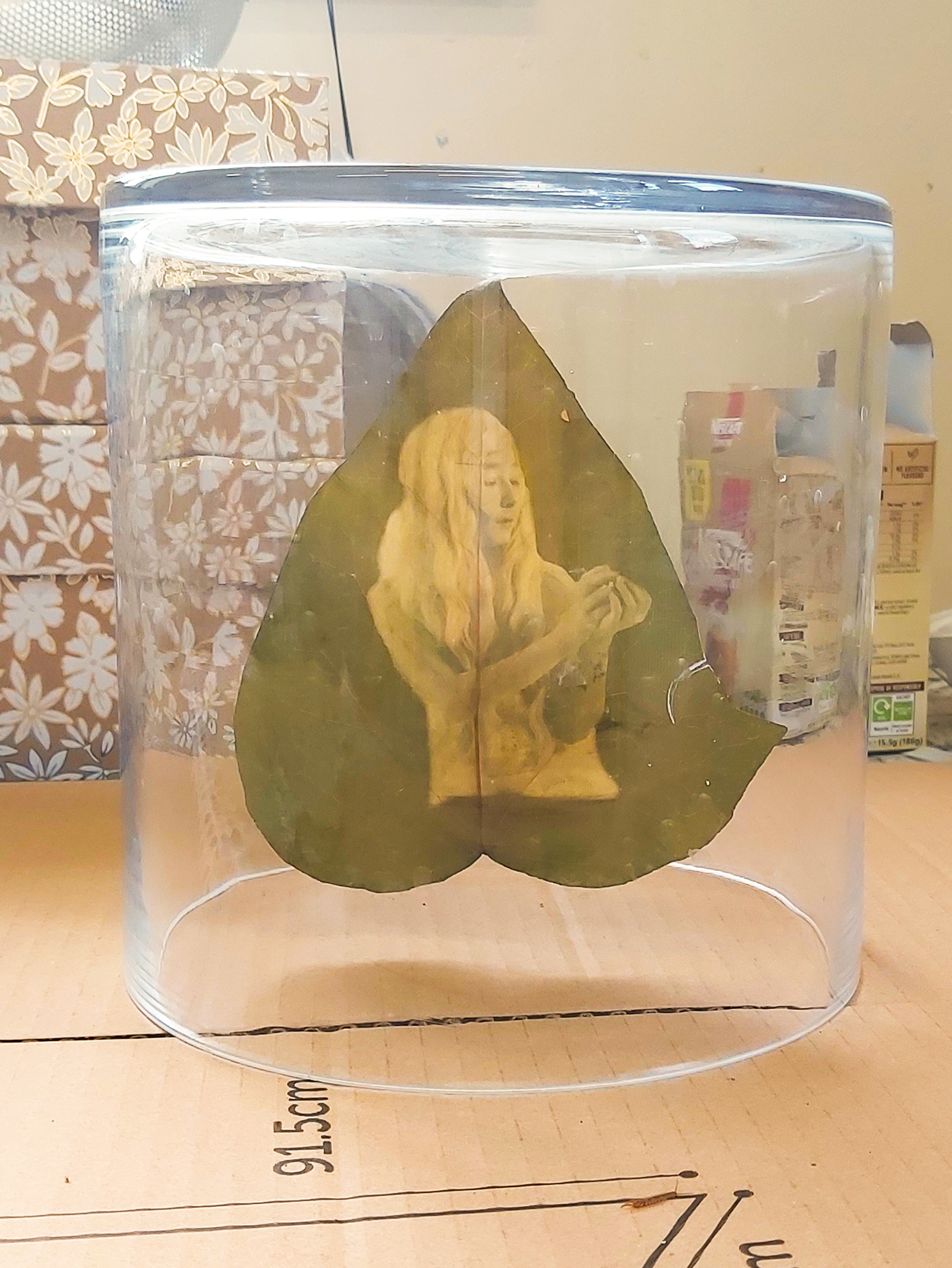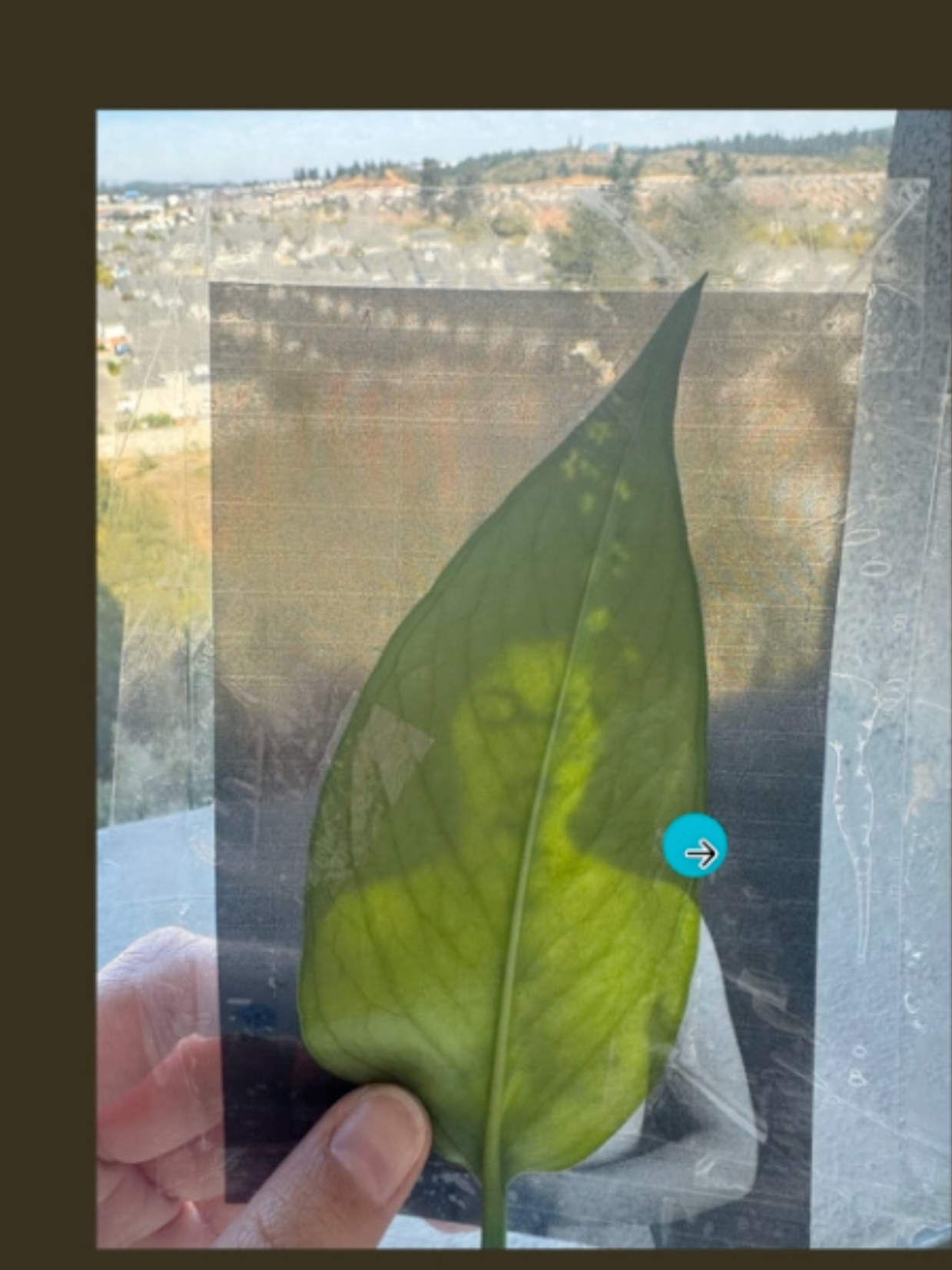For my leaf portraits, I primarily used two plant species:
1. Arctium minus (Burdock): A large-sized plant found near the Oxford canal. It typically grows in very humid areas and has medicinal properties.
2. Alliaria petiolata (Garlic Mustard): A thin, moist, and delicate edible leaf with traditional uses. Its maximum size of 12 x 12 cm was ideal for my small format prints. Due to its thinness and moisture, it captured a wide range of tones and subtones from the acetate photographic film, allowing for greater visual detail. However, upon drying, it became very fragile and brittle, presenting a significant challenge.
I also experimented with Ivy and various petals and leaves.
Ritual Plants in the Exhibition
The exhibition also featured representations of four plant species used in rituals or religious ceremonies in various indigenous cultures of Latin America and the world:
1. Ayahuasca (Banipteriopsis caapi - Psychotria viridis)
2. Peyote (Lophophora williamsi)
3. Psilocybe
4. Floripondio (Brugmansia arborea)
These were represented in the mural I painted in the room and in the portraits printed on large leaves. My intention was to honor the ancient technologies of communion with the plant world, considering that these plants open portals or unlock deep internal and psychological processes in ceremony participants. In recent years, the Western world has turned its attention to the great psychic potential and social transformation that the use of hallucinogenic plants can have for treating depression and other psychological and spiritual ailments.

